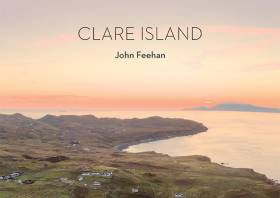Displaying items by tag: John Feehan
New Book On Clare Island ‘Shines Spotlight On Its Richness Of Life’
One hundred years ago, Irish naturalist Robert Lloyd Praeger led a survey of the natural history and cultural heritage of Clare Island in Co Mayo at a level of detail greater than any area of comparable size at that time.
Almost a century later, the Royal Irish Academy set about repeating the exercise with the intention of assessing and evaluating change on the island over the intervening years.
In his new book Clare Island, which launches this Saturday 5 October on the island itself, John Feehan distils the results of the two great surveys with elegance and enthusiasm to shine a spotlight on the richness of life surviving there.
Feehan, a longtime broadcaster on cultural and heritage issues, interweaves the natural and cultural heritage of the island and shares his wider ecological knowledge to help us understand the role each species plays in the life of this remarkable place.
“Few places on Earth, and none elsewhere in Ireland, have yielded such a concentrated inventory of knowledge about the natural world,” says Michael Viney, who has described Feehan as “one of Ireland’s top ecologists and communicators of nature”.
Clare Island by John Feehan is available now from the RIA, priced €40.





























































